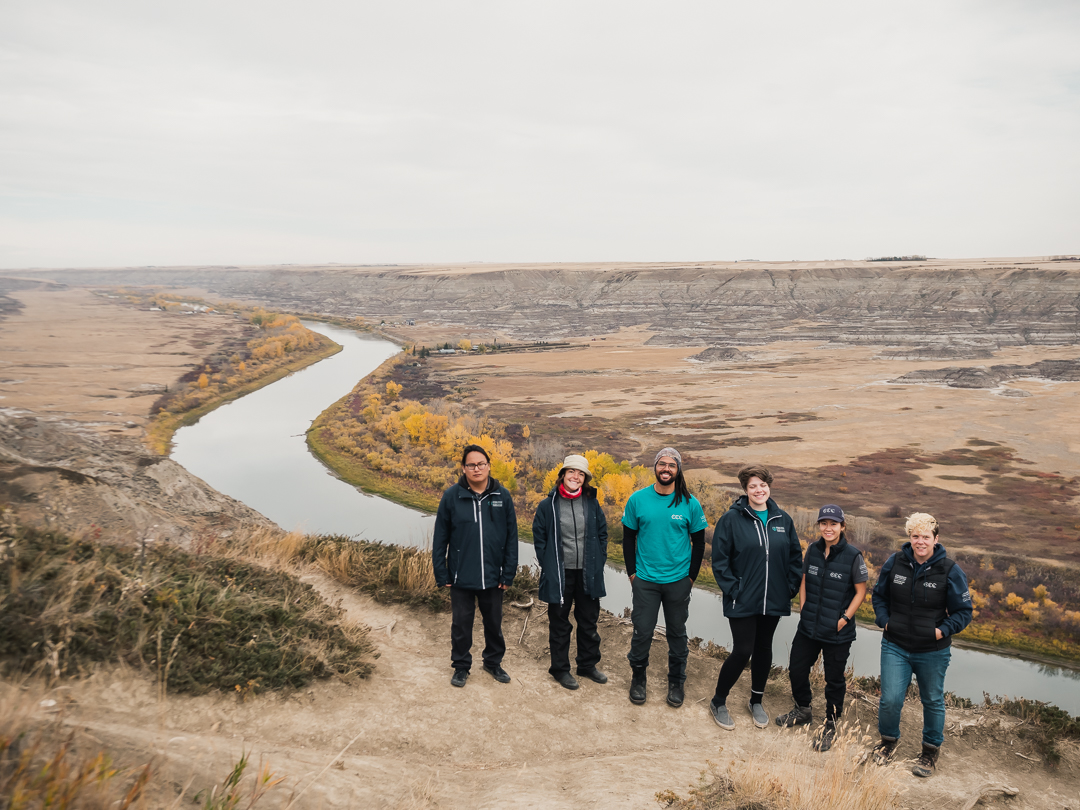Volunteers with the Canadian Conservation Corps (CCC) gave a virtual presentation of projects they completed while working alongside the Flood Mitigation Office on Thursday, November 26.
Longtime Drumheller resident Stan Solberg played a key role in bringing the program, and the volunteers, to the Drumheller Valley.
Chief Resiliency and Flood Mitigation Officer Darwin Durnie told the Mail, “Stan pulled together this entire program with the Canadian Wildlife Federation, allowing them to get here.” Mr. Solberg also garnered the participation of the Flood Mitigation Office, and also Mayor Heather Colberg and Chief Administrative Officer Darryl Drohomerski.
The presentation showcased three projects the volunteers worked on throughout their time with the Flood Mitigation Office, with the main focus of each project being on conservation.
While conservation was the main focus of the projects, the findings will provide the Flood Mitigation Office with invaluable information.
“The Flood Mitigation Office was pleased with the work that the CCC volunteers performed,” Durnie said. “The activities, research, and energy they created will surely continue in the coming years.”
Patrick Crowchild Jr. presented Conservation Through Art, a series of paintings inspired by the landscape and his time in the Drumheller Valley.
Crowchild’s artwork is part of an art installation at the Flood Mitigation Office and challenges the definition of conservation while showcasing its many facets. Crowchild also completed sketches and drawings of local, native plants, though these were not included in the presentation.
CCC volunteers, Megan Davies, Victoria Choi, and Kelsey White journeyed down the Red Deer River with Andy Neuman, former executive director of the Royal Tyrrell Museum.
They discovered several river islands along the Red Deer River, which are Crown Land, are already being used as camping areas.
The group surveyed the river and adjacent riparian areas, using GPS and geographic information systems (GIS) to map areas on these river islands which could be sustainably used for both day-use and overnight camping. They also proposed semi-permanent structures to help educate campers to “Leave no trace” after discovering litter, including discarded diapers, beer cans, and fish hooks in the areas.
These proposed sites could target tourism from canoers and kayakers in otherwise undevelopable areas, while also promoting conservation of these areas, without compromising structural developments in the floodplains.
The final project by Heather Blanchette and Ryan Wilkes, Birding in the Badlands, showcased the wildlife, particularly avians, found naturally within the Drumheller Valley.
Volunteers undertook six road trips to survey wildlife from Orkney Viewpoint to Dorothy and Oyen.
They discovered Orkney Viewpoint offers a unique vantage where bird watchers can look down upon raptors, such as hawks and eagles, as they soar above the valley.
Mr. Solberg said, “There are more and more people coming to Drumheller, very wildlife conscious.” While some of the expeditions were not suited for casual bird and wildlife watchers, Mr. Solberg added, “Always be camera-ready when you come to Drumheller.”






















